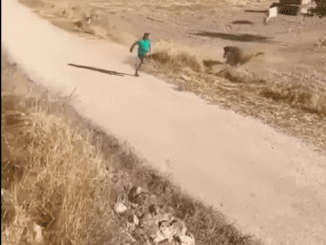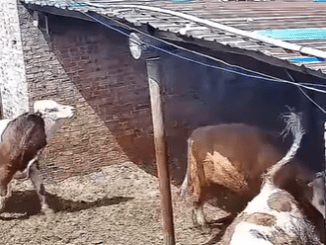In recent years, the rise in wild boar attacks on humans has become a troubling trend across various regions. Once considered rare, these incidents are now garnering increased attention from wildlife experts and local authorities alike. This article explores the causes, consequences, and preventive measures related to this emerging concern.

Understanding the Problem
Wild boars, or Sus scrofa, are native to Europe, Asia, and North Africa but have also become established in other parts of the world, including the United States. These animals are known for their aggressive behavior and formidable physical capabilities. Typically, wild boars are not inherently hostile toward humans, but when they feel threatened or are in search of food, they can become dangerous.
Recent data suggests a rise in these attacks, particularly in areas where human and wild boar habitats overlap. This increase can be attributed to several factors:

Habitat Encroachment: Urban expansion and agricultural development have increasingly encroached on wild boar habitats. As their natural spaces shrink, boars are forced into closer contact with humans, leading to more frequent encounters.
Food Scarcity: In regions where natural food sources for wild boars are dwindling, these animals may venture into human-populated areas in search of sustenance. This often leads to them rummaging through garbage or raiding gardens, heightening the risk of confrontation.

Population Growth: Wild boar populations have been steadily increasing due to their high reproductive rates. Larger populations can result in more frequent and severe interactions with humans.
Consequences of Attacks
Wild boar attacks can have serious consequences, both for the individuals involved and for local communities. Injuries from these encounters can range from minor scratches and bruises to severe lacerations and infections. Additionally, such incidents can lead to psychological trauma and increased fear among the affected populations.
For local authorities, managing the aftermath of wild boar attacks involves not only addressing the immediate health concerns but also implementing strategies to mitigate future risks. This can include public awareness campaigns, improved waste management, and more stringent control measures for wild boar populations.

Prevention and Mitigation
Preventing wild boar attacks requires a multifaceted approach. Key strategies include:
Public Education: Informing the public about the risks associated with wild boars and how to avoid encounters is crucial. This can involve community workshops, informational signage, and media campaigns.
Waste Management: Properly securing garbage and food waste can reduce the likelihood of attracting wild boars to human areas. Communities should implement and enforce measures to ensure waste is disposed of in a manner that does not entice wildlife.
Habitat Management: Creating buffer zones between human habitation and wild boar habitats can help reduce the likelihood of encounters. Additionally, efforts to restore and protect natural habitats can provide boars with alternative food sources and living spaces.
Population Control: In some cases, controlled hunting or other population management techniques may be necessary to keep wild boar numbers in check and reduce the frequency of attacks.
Conclusion
The rise in wild boar attacks on humans highlights the growing need for effective management strategies and public awareness. By understanding the underlying causes and implementing preventative measures, communities can work towards reducing the risks associated with these encounters. Ensuring a harmonious coexistence between humans and wildlife remains a challenging but essential goal in safeguarding both people and animals.


